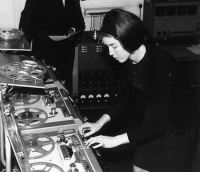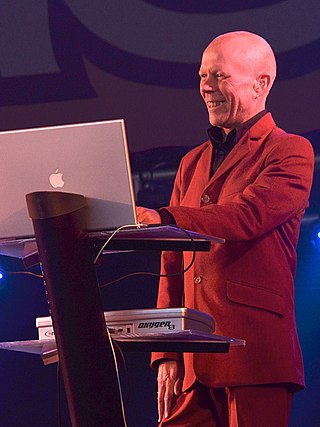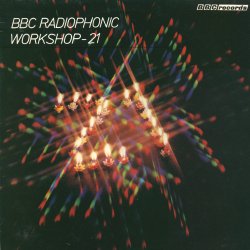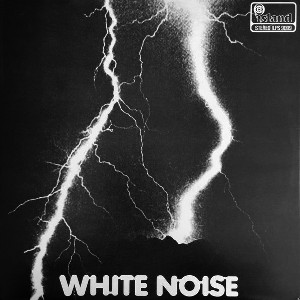
The BBC Radiophonic Workshop was one of the sound effects units of the BBC, created in 1958 to produce incidental sounds and new music for radio and, later, television. The unit is known for its experimental and pioneering work in electronic music and music technology, as well as its popular scores for programmes such as Doctor Who and Quatermass and the Pit during the 1950s and 1960s.

Delia Ann Derbyshire was an English musician and composer of electronic music. She carried out notable work with the BBC Radiophonic Workshop during the 1960s, including her electronic arrangement of the theme music to the British science-fiction television series Doctor Who. She has been referred to as "the unsung heroine of British electronic music", having influenced musicians including Aphex Twin, the Chemical Brothers and Paul Hartnoll of Orbital.

Vincent John Martin, known professionally as Vince Clarke, is an English synth-pop musician and songwriter. Clarke has been the main composer and musician of the band Erasure since its inception in 1985, and was previously the main songwriter for several groups, including Depeche Mode, Yazoo, and the Assembly. In Erasure, he is known for his deadpan and low-key onstage demeanour, often remaining motionless over his keyboard, in sharp contrast to lead vocalist Andy Bell's animated and hyperactive frontman antics.

The VCS 3 is a portable analog synthesizer with a flexible modular voice architecture introduced by Electronic Music Studios (EMS) in 1969.
Electronic Music Studios (EMS) is a synthesizer company formed in Putney, London in 1969 by Peter Zinovieff, Tristram Cary and David Cockerell. It is now based in Ladock, Cornwall.

The EMS Synthi 100 was a large analogue/digital hybrid synthesizer made by Electronic Music Studios, London, originally as a custom order from Radio Belgrade for what was to be the Radio Belgrade Electronic Studio, largely thanks to contact between composer Paul Pignon, then living in Belgrade, and Peter Zinovieff. The synthesiser was designed by David Cockerell and documented in detail in 1971. The cost at that time was £6,500. The last unit built by EMS was number 30. Afterwards, one final unit was built by Datanomics, who bought assets from EMS when the company folded in 1979. The redesigned unit was sold to Gabinete de Música Electroacústica, Cuenca, Spain.

The EMS Synthi A and the EMS Synthi AKS are portable modular analog synthesisers made by EMS of England. The Synthi A model debuted in May 1971, and then Synthi AKS model appeared in March 1972 a with a built-in keyboard and sequencer. The EMS Synthi models are notable for its patch pin matrix, its functions and internal design are similar to the VCS 3 synthesiser, also made by EMS. EMS is still run by Robin Wood in Cornwall, and in addition to continuing to build and sell new units, the company repairs and refurbishes EMS equipment.
The Doctor Who theme music is a piece of music written by Australian composer Ron Grainer and realised by Delia Derbyshire at the BBC Radiophonic Workshop. Created in 1963, it was the first electronic music signature tune for television. It is used as the theme for the science fiction programme Doctor Who, and has been adapted and covered many times.
White Noise are an English experimental electronic music band formed in London in 1968, after American-born David Vorhaus, a classical bass player with a background in physics and electronic engineering, attended a lecture by Delia Derbyshire, a sound scientist at the BBC Radiophonic Workshop. Derbyshire and Brian Hodgson, then both former members of electronic music project Unit Delta Plus, joined Vorhaus to form the band.
Experimental Audio Research is an experimental music collective formed around Peter Kember, formerly of Spacemen 3. While Spacemen 3 were a relatively traditional rock and roll band with strong experimental leanings, E.A.R. is essentially a free improvisation project, creating instrumental music characterized by lengthy, droning textures and slowly evolving structures.
Brian Hodgson is a British television composer and sound technician. Born in Liverpool in 1938, Hodgson joined the BBC Radiophonic Workshop in 1962 where he became the original sound effects creator for the science fiction programme Doctor Who. He devised the sound of the TARDIS and the voices of the Daleks, which he created by distorting the actors' voices and feeding them through a ring modulator. he also effectively scored four serials under the credit of "Special Sound". He continued to produce effects for the programme until 1972 when he left the Workshop, leaving Dick Mills to produce effects for the remainder of the show's run.

Peter Kember, also known by his stage name Sonic Boom, is an English singer-songwriter, composer and record producer. He was a founding member, vocalist, guitarist and keyboardist of alternative rock band Spacemen 3, lasting from 1982 until the band's dissolution in 1991. He is now based in Sintra, Portugal.
Peter Howell is a musician and composer. He is best known for his work on Doctor Who as a member of the BBC Radiophonic Workshop.

BBC Radiophonic Music is the first compilation of music released by the BBC Radiophonic Workshop. It featured music by three of the Workshop's most prominent composers, John Baker, David Cain, and Delia Derbyshire. The album was originally released by BBC Radio Enterprises in 1968 to coincide with the Workshop's tenth anniversary and later re-released in 1971 on the BBC Records label.

BBC Radiophonic Workshop – 21 is a compilation by the BBC Radiophonic Workshop to celebrate their 21st anniversary in 1979. It was compiled as an overview of their work both old and new, showcasing the changes in the Workshop as they developed from backroom sound effects suppliers for BBC Radio to full-fledged in-house music composers for the whole of the corporation. It demonstrates the move from the musique concrète and tape-manipulation techniques used in the early days, to the synthesiser works of the 1970s. The first side of the album consisted of material from 1958 to 1971, covering their early work creating jingles, sound-effects and some incidental music. This side includes the first material by Workshop founder Desmond Briscoe to be commercially released, as well as sound effects from The Goon Show, Maddalena Fagandini's interval signal that later became "Time Beat", some of Delia Derbyshire's experimental work and the pilot episode version of the Doctor Who theme music. The second side of the record covered the period between 1971 and 1979, including Richard Yeoman-Clark material from popular BBC series Blake's 7 and Peter Howell's vocoder heavy "Greenwich Chorus" theme for The Body in Question. It was reissued on CD by Silva Screen Records on 22 April 2016.

An Electric Storm is the debut album by electronic music group White Noise. The band recorded the first two tracks with the intention of producing a single only but were then persuaded by Chris Blackwell of Island Records to create an entire album. At this point the group had established the Kaleidophon Studio in a flat in Camden Town, London, and spent a year creating the next four tracks. The last track was put together in one day when Island demanded the completion of the album. Although not very successful on its initial release, the album is now considered an important and influential album in the development of electronic music. Chris Carter of Throbbing Gristle has called it "the most groundbreaking yet completely underrated electronic record of the 20th century".
Peter Zinovieff was a British composer, musician and inventor. In the late 1960s, his company, Electronic Music Studios (EMS), made the VCS3, a synthesizer used by many early progressive rock bands such as Pink Floyd and White Noise, and Krautrock groups as well as more pop-orientated artists, including Todd Rundgren and David Bowie. In later life, he worked primarily as a composer of electronic music.
Appliance were a British experimental post-rock three piece band, who released four albums between 1999 and 2003 on Mute Records.

Eager to Tear Apart the Stars is the second studio album by English electronic musician Leyland Kirby, released on 3 October 2011. Following his own name debut album Sadly, the Future Is No Longer What It Was, Kirby continued exploring a more personal side of his music, though one that differs from his work as the Caretaker. Kirby produced the songs without using any samples, mostly creating piano tracks from synthesisers. This style of sound drew comparisons to the work of composers Harold Budd and Roedelius, though the record's press release claimed Kirby has his own oeuvre.












